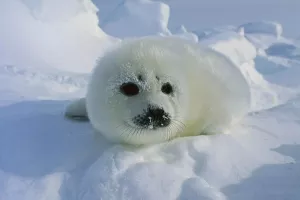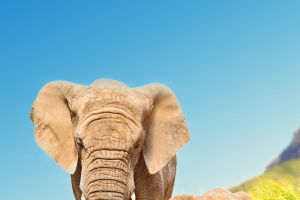The polar bear is the largest land carnivore in the world, with a large and stout body and a shoulder height of 1.6 meters. Adult males weigh between 300-800 kg, with head and body lengths up to 2.5 meters.
Females are smaller, weighing 150-300 kg and 1.8-2 meters long. Maybe looking at the pictures you will think polar bears are cute, but in fact it is much bigger than we think.
The habits of polar bears.
Habitat.
Polar bears are animals that can survive in harsh environments, mainly near the Arctic sea ice.
Senses.
Polar bears, like other species of bears, have an extremely sensitive sense of smell and can capture scents in a radius of 1 km or 1 meter under ice and snow.
Explore objects with sensitive lips and beards. Their vision and hearing are not particularly developed.
Activity time.
Polar bears spend most of their lives in a "static" state, such as sleeping, lying down to rest or waiting for prey, which takes up about 66.6% of their time.
29.1% of the time was walking or swimming on land or ice. 1.2% of the time was spent attacking the prey, and basically enjoyed the last remaining delicious food.
Dormant period.
Polar bears are very active from March to May each year. In the severe winter, polar bears are greatly reduced in outdoor activities, and it is difficult for polar bears to eat for a long time. At this time, they found a hidden place to lie down and sleep. Respiratory rate decreases to localized hibernation.
Food chain.
Polar bears are the top carnivore in the entire Arctic food chain and the only bear family that eats pure meat.
Most of its main prey comes from the ocean, such as seals, walruses, beluga whales, fish, but also birds and other mammals.
Natural enemy.
Humans and other polar bears are polar bears' only natural enemies and predators.
Why are polar bears adaptable to extreme arctic weather?
1. Polar bears moved their habitat closer to the relatively warm Arctic Ocean.
And the polar bear's skin is black and the hair is hollow and transparent, which helps it absorb the heat of the sun, which is one way it maintains its body temperature.
2. The success rate of polar bear hunting is still very high. A polar bear's fur is transparent, but it appears white because it reflects the sun and ambient light.
The seemingly white fur blends perfectly with the environment, providing favorable conditions for polar bears to hide. This also greatly improves the survival rate of polar bears.
3. Polar bears are excellent swimmers and were once considered marine animals. But it is not.
There are many reasons for the decline of polar bears, but the reduction of the Arctic ice cap due to warming weather is one of the important reasons.


